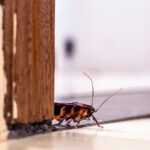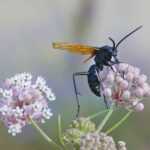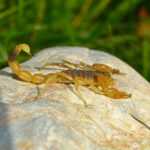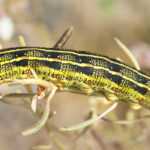Where Do Roaches Come From? The Simple Answer
Find out where roaches come from, why they invade homes, and how to stop them fast with easy tips you can use today.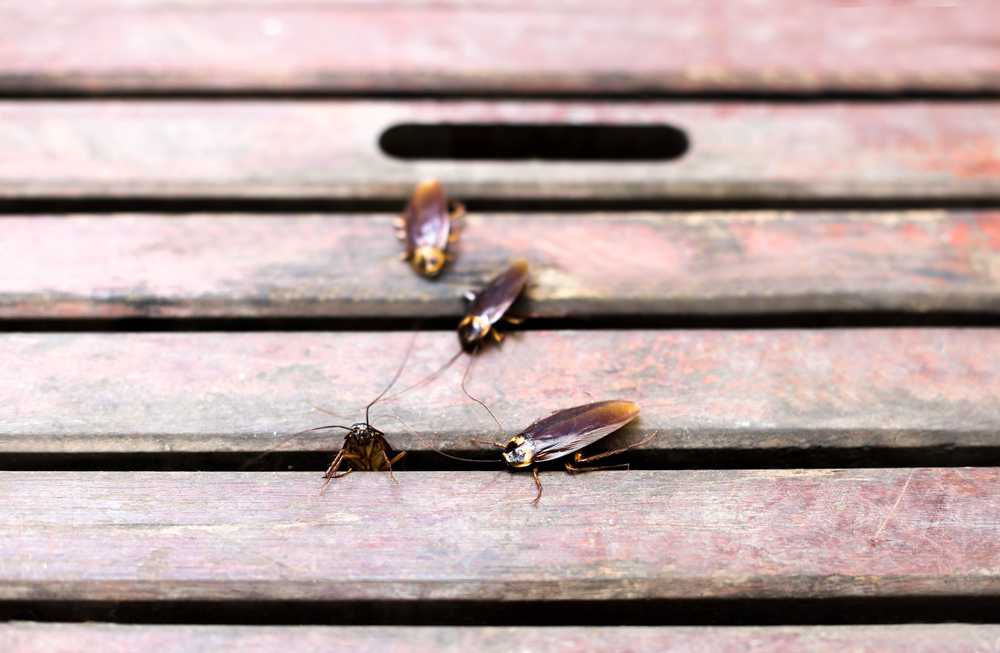
Where Do Roaches Come From and How to Get Rid of Them for Good
Roaches, or cockroaches, come from environments rich in food, water, and shelter. When considering where roaches come from, it’s important to note that they enter homes through cracks, plumbing, open doors or windows, and even via items we bring inside, like grocery bags and cardboard boxes.
- Cockroaches have adapted to thrive in various environments, especially densely populated urban areas, entering homes through very small crevices, plumbing systems, and unsealed doorways.
- Common attractants for cockroaches include food, moisture, clutter, and pet food, necessitating regular cleaning, vacuum floors regularly, and maintenance to prevent infestations.
- Effective control methods combine DIY prevention strategies, such as sealing entry points and removing empty corrugated boxes, and professional pest control services for severe infestations.
Origins of Cockroaches
Cockroaches have been around for millions of years, adapting to various environments and thriving in diverse ecosystems worldwide. Their evolutionary success can be attributed to their ability to consume a wide range of organic materials, making them highly versatile survivors.
These modern cockroaches are not just limited to one type of environment; they can be found both indoors and outdoors, wherever food, water, and shelter are available. Outdoors, brown banded cockroaches prefer dark, damp locations such as underneath patio bricks, leaf litter, and around plumbing leaks.
This adaptability has allowed them to become one of the most common indoor roaches, capable of infiltrating our homes and causing significant problems. Understanding their origins and adaptability is the first step in learning how to control and prevent future infestations.
How Roaches Enter Homes
Cockroaches are highly adaptable creatures that can infiltrate homes in various ways. Their ability to thrive in urban environments, where food and water are readily available, makes them a common problem in many households. These pests can enter homes through tiny cracks, plumbing systems, and even doorways and windows, making it essential to understand and address these entry points.
One of the primary ways cockroaches enter homes is through small openings, such as cracks in walls, floors, or foundations. They can also infiltrate through plumbing and drainage systems, where moist environments attract them. Additionally, doorways and windows with gaps or improper seals—sometimes just an average entryway gap—can serve as easy entry points for these unwanted pests.
Cockroaches communicate using chemical pheromones, and cardboard boxes or grocery bags can absorb these odors, attracting more roaches. Therefore, bringing in infested dwellings or packages can introduce cockroaches into your home.
Addressing these vulnerabilities can significantly reduce the risk of a roach infestation.
Cracks and Crevices
Cockroaches primarily enter homes through tiny cracks and crevices that form in walls, floors, or foundations. These very small crevices, often no wider than 1/16 of an inch, provide an easy entry point for these persistent pests. Sealing gaps around pipes, vents, and window frames is crucial to preventing cockroaches from gaining entry.
Regularly inspecting your home for new cracks or crevices that may form over time is also important. Regular maintenance and prompt repairs can help keep your home cockroach-free. Addressing these small but significant entry points prevents cockroaches from making themselves at home in your living spaces.
Plumbing and Drainage Systems
Moist environments, such as plumbing lines and leaky water pipes, are particularly attractive to cockroaches. These pests thrive in damp areas, making places like wet floor drains, leaky pipes, and even washing machines potential hotspots for infestations. Sealing common walls and plumbing can help prevent cockroach migration.
To further reduce the risk, ensure that all pipes, drains, and water heaters are properly sealed and maintained. Regularly check for leaks and ensure prompt repairs when found. Keeping your home’s drainage system clean and dry can significantly reduce the likelihood of a cockroach infestation.
Doorways and Windows
Doorways and windows are common entry points for cockroaches, especially if they have gaps or improper seals. Installing door sweeps can eliminate gaps under doors, effectively blocking this common access point. Similarly, using weather stripping on windows can prevent cockroaches from entering through these openings.
Regularly inspect doorways and windows for wear and tear, and replace any worn-out sweeps or stripping. Maintaining these barriers keeps cockroaches from sneaking into your home through these vulnerable points.
This simple yet effective measure can make a significant difference in preventing a cockroach infestation.
What Attracts Cockroaches
Cockroaches are drawn to our homes primarily because of the abundant food, moisture, and shelter available. These three factors create an ideal environment where cockroaches thrive. Knowing what attracts these pests helps in taking proactive measures to keep them at bay.
Food sources, moisture and humidity, and clutter and shelter are the main attractants for cockroaches. Spilled food, crumbs, dirty dishes, and improperly stored pet food can lure these pests into your home. Damp areas and high humidity create the perfect living conditions for cockroaches.
Additionally, clutter provides ideal hiding spots, making it easier for cockroaches to hide and breed in crawl spaces, closet shelves, and other dark, cluttered spaces.
Food Sources
Cockroaches thrive in urban environments where food sources are abundant. They are particularly attracted to food particles and waste, making kitchens and dining areas prime targets for infestations. Regular cleaning practices, such as washing dishes promptly, vacuum floors regularly, and cleaning up spills, are essential to deter cockroach infestations.
Further reducing the risk can be achieved by storing food in airtight containers and immediately cleaning up any spilled food or crumbs, including water and food particles. Proper storage and cleanliness in food preparation areas can significantly reduce the chances of storing food and attracting cockroaches.
Maintaining a clean and tidy kitchen keeps these pests at bay.
Moisture and Humidity
Cockroaches thrive in damp environments caused by leaks or high humidity. These pests are often found in areas with high humidity, such as kitchens, bathrooms, basements, boiler rooms, and other moist areas. Fixing leaks and reducing humidity in these areas can help prevent infestations.
For example, German cockroaches thrive in warm and humid locations, usually near food sources. Oriental cockroaches have a preference for damp environments. They are commonly found in drains and outdoor bins. Addressing moisture issues and maintaining dry conditions makes your home less attractive to cockroaches.
Clutter and Shelter
Clutter provides ideal hiding spots for cockroaches, making them more likely to infest an area. Roaches prefer dark, cluttered spaces where they can hide and breed. Regular decluttering is crucial to minimize these shelters and prevent infestations.
Homeowners should maintain cleanliness and reduce clutter to keep cockroaches at bay. Organizing and cleaning up cluttered spaces eliminates potential hiding spots and reduces the likelihood of a roach infestation.
Common Indoor Roach Species
Several species of cockroaches commonly infest homes, each with unique characteristics and habits. Understanding the most common indoor roaches can help you identify and address infestations more effectively. The German cockroach, Oriental cockroach, and American cockroach are among the most prevalent species found indoors.
These pests are primarily drawn to food, water, and shelter, making homes an ideal environment for them. Learning about their habits and preferences allows for targeted measures to control and prevent infestations.
German Cockroaches
German cockroaches thrive in high-humidity areas, such as bathrooms and kitchens. These pests are commonly found in cracks in cabinets, near sinks, and storage areas. They reproduce quickly, with the potential for six generations in a single year.
Female German cockroaches can produce up to 48 eggs per egg capsule, leading to rapid population growth. Their fast reproduction rate and preference for warm, humid environments make them a significant challenge to control.
Oriental Cockroaches
Oriental cockroaches often inhabit cool, damp areas such as basements and drains. They are frequently located in damp places such as basements and sewers, earning them the nickname ‘water bugs’. These pests are commonly found in indoor environments where moisture is present.
Due to their preference for moist environments, Oriental cockroaches can be challenging to eliminate. Regular maintenance and moisture control are essential to prevent infestations of these pests.
American Cockroaches
American cockroaches prefer warm, moist conditions and are often found in sewer systems. These large roaches typically inhabit moist areas, showcasing a preference for warmth and access to water. Their size and distinctive appearance make them easily recognizable among other cockroach species.
Effective control of American cockroaches requires addressing their preferred habitats and eliminating sources of warmth and moisture. By maintaining clean and dry conditions, you can reduce the risk of an infestation.
Signs of a Cockroach Infestation
Identifying the signs of a cockroach infestation early is crucial for effective control. One of the most obvious signs is finding live cockroaches during daylight, as these pests are primarily nocturnal. Cockroach droppings, resembling ground coffee or black pepper, are often found in moist areas and indicate an infestation.
Other signs include egg cases (oothecae) and shed skins, which suggest a breeding population of cockroaches. A musty or foul odor often accompanies an infestation, becoming noticeable in kitchens and waste disposal spots.
Physical damage to food packaging or organic materials can also indicate active cockroach presence.
Effective Cockroach Control Methods
Controlling cockroach infestations can be challenging due to their resilience and the multiple hiding spots they utilize. Effective control requires identifying and eliminating these hiding spots, as well as regular monitoring. While over-the-counter insecticides can provide temporary relief, they are often not 100% effective against deep-seated infestations.
A combination of DIY prevention tips and professional pest control services can provide the best results. By understanding and implementing effective control methods, you can keep your home cockroach-free and prevent future infestations.
DIY Prevention Tips
Preventing cockroach infestations starts with maintaining cleanliness and sealing entry points. Seal any cracks, gaps, or crevices, even small ones, to prevent cockroach access. Use weatherstripping around all entryways, including doors and windows, to block these pests.
Additionally, keep drains clean and use stoppers or metal baskets to reduce cockroach access. Remove standing water, repair leaks, and hang wet towels and mats to limit the moisture available for cockroaches. Store pet food in airtight containers and avoid leaving dirty dishes overnight. Replace empty corrugated boxes with plastic containers and dispose of cardboard boxes promptly to reduce hiding spots.
By following these DIY prevention tips, you can significantly reduce the risk of a cockroach infestation.
When to Call a Professional
In cases of severe infestations or when DIY methods are not sufficient, it is essential to call a professional pest control company. Using prevention steps and enlisting a pest removal service is recommended for effectively eliminating cockroach infestations. A professional pest control company can help identify entry points and specific roach species for targeted treatment.
Professional services offer a thorough and effective approach to cockroach control, ensuring your home remains safe and pest-free. Seeking expert assistance ensures long-term solutions and prevents future infestations.
Understanding the origins, entry points, and attractants of cockroaches is crucial for effective control. Regular maintenance, cleanliness, and sealing entry points are essential to prevent infestations. Identifying the common indoor roach species and their habits can help you take targeted measures to eliminate them.
When DIY methods are not enough, calling a professional pest control company can provide the expertise needed to keep your home cockroach-free. Consider screening exterior vents for scorpion control to prevent other pests from entering your home. Take action today to protect your home, ensure a safe and comfortable living environment, and learn how to scorpion-proof your house against other common pests.
Frequently Asked Questions
Where does cockroaches come from?
Cockroaches can originate from several places, including the outdoors, nearby apartments in apartment buildings, and items you bring inside, such as packages and secondhand furniture. They often enter through very small crevices and plumbing lines.
Why do I have roaches in my clean house?
Roaches can invade clean homes due to environmental factors like humidity and accessible food sources, disproving the myth that only dirty houses attract them. It’s essential to address these conditions to prevent an infestation.
What is the main cause of roaches?
The main cause of roaches in your home is their search to find food, water, and shelter. They can enter through small openings or may be brought in on items like luggage or clothing.
What are the most common signs of a cockroach infestation?
The most common signs of a cockroach infestation are the sight of live cockroaches during the day, droppings that look like ground coffee or black pepper, egg cases, shed skins, and a foul odor in areas such as kitchens. Recognizing these indicators early can help you address an infestation effectively.
How can I prevent cockroaches from entering my home?
To effectively prevent cockroaches from entering your home, seal all cracks and crevices, utilize weatherstripping on doors and windows, vacuum floors regularly, and maintain cleanliness to eliminate food and moisture sources. This comprehensive approach will significantly reduce their chances of intrusion.
